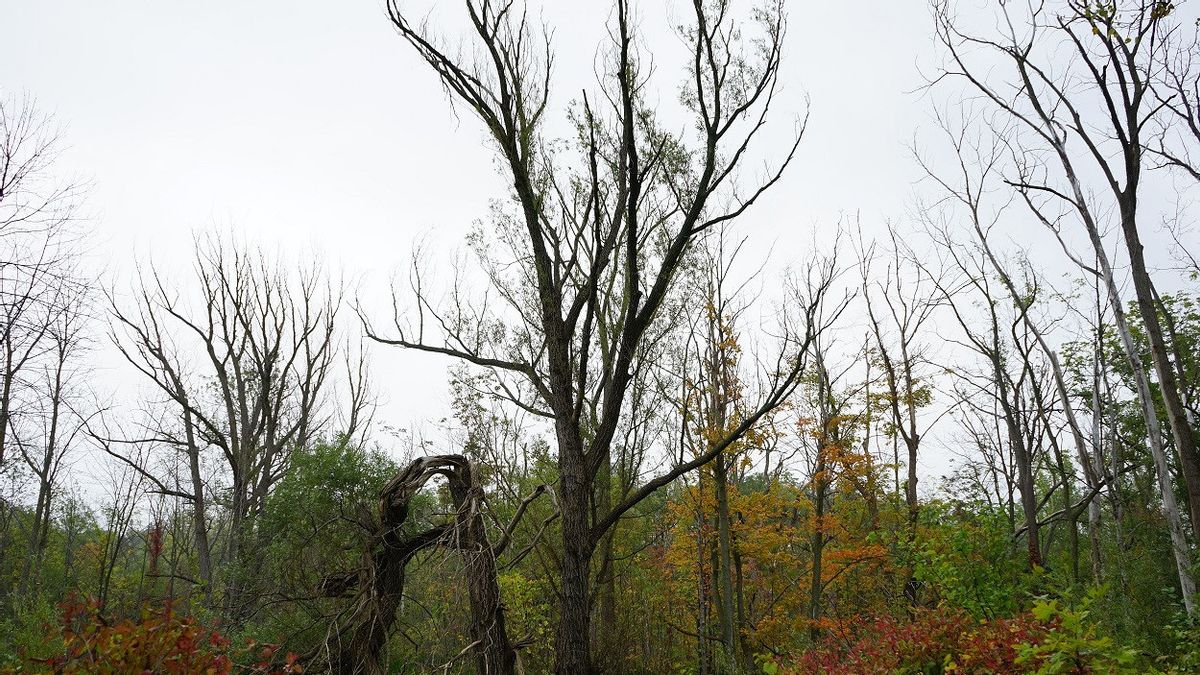JAKARTA - Surveys say about 82 percent of the US population lives in urban environments, where trees are at high risk of dying from insect pests.
As the number of Americans in urban areas increases, researchers are becoming more focused on preserving street trees, as the plants provide many benefits, including improved air quality and cooling.
Between 2020 and 2050, an estimated 1.4 million urban trees will be killed by invasive insects. The public will see about $900 million in related costs, according to the first study of its kind published by the British Ecological Society.
In the survey, researchers from McGill University, as well as the US Department of Agriculture Forest Service Southern Research Station and North Carolina State University, found that 90 percent of the projected 1.4 million tree deaths were caused by the emerald ash borer.
By mid-century, the emerald ash borer—the green buprestid or gem beetle native to northeastern Asia, was estimated to have killed every ash tree in more than 6,000 urban areas, researchers believe.
"This result is expected to serve as a warning not to plant a single tree species across a city, as has been done with ash trees in North America," said study leader Dr Emma Hudgins, of McGill University, quoted by Sputnik News April 10.

To examine the threat of invasive insects, researchers combined four models: street tree populations in 30,000 communities; prediction of the distribution of 57 insect species; deadlines/impact of insects on different tree species and costs associated with removing and replacing dead trees.
Hudgins emphasized that expanding the diversity of street trees increases resistance to pest attack.
"While we know this more intuitively for monoculture crops, many cities continue to grow what are essentially monoculture urban forests," adds Dr. Hudgins.
This study is the first national spatial forecast of street tree mortality due to invasive insects.
Street trees provide many benefits to their urban environment, including improved air quality, carbon capture, cooling of roads and pedestrian walkways, and measurable improvements in people's mental and physical health.
Asian wood-boring insects, such as the long-horned orange beetle, are believed to be the highest threat to urban trees, according to the study. New research on this insect could potentially cost $4.9 million over a 30-year period.
"This paper shows that unless we plant a variety of tree species in our cities, urban trees are particularly at risk from invasive pests," said University of Bristol professor Jane Memmott, who was not involved in the study.
"The message it brings home to urban planners, is to plant many species in cities rather than focus on just a few species that are already known; it will keep the trees beautiful, and it will keep them in our cities," he said.
Researchers have determined that about 95 percent of tree deaths will occur in 25 percent of urban areas—with hotspots in New York City, New York, Chicago, Illinois and Milwaukee, Wisconsin—where conditions allow invasive species to spread.
The English, Chinese, Japanese, Arabic, and French versions are automatically generated by the AI. So there may still be inaccuracies in translating, please always see Indonesian as our main language. (system supported by DigitalSiber.id)













